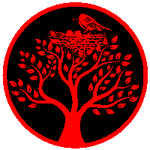Hi Tristan, welcome to the forum.
Both tsuba have seen better days, so it’s difficult to judge. Sorry, I’m unable to sort out the signatures. The first one shows takabori, suemon-zōgan, and possibly remnants of nunome-zōgan. The coexistence of multiple decorative techniques makes me think of Shōami school (or possibly Nara school).
As for the other one, the bird depicted appears to be a pigeon, so the shape is called hato-gata. There are irregular granulations on the rim, which could be either iron bones (a good sign) or casting debris (a bad sign). I’m quite confident the first tsuba is an old piece; I’m less certain about the second one.



